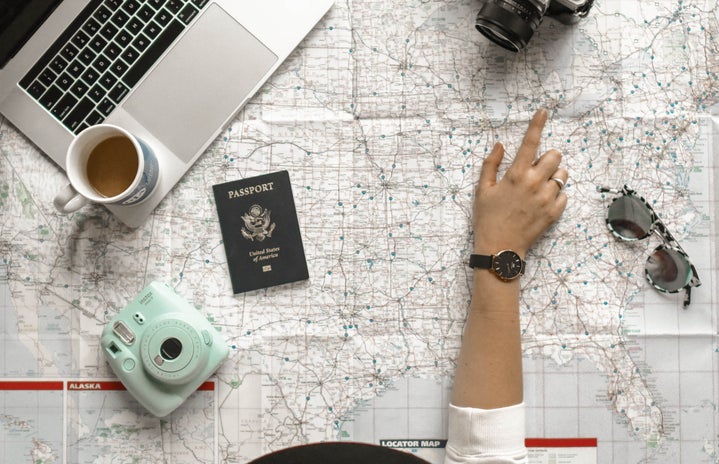When my study abroad professors told us that we were going on a day trip to Segovia, my first thought was, “Isn’t that the kingdom Anne Hathaway rules in The Princess Diaries?”
Unfortunately, the kingdom I was thinking of was Genovia, and while it’s located near Spain, it’s also fictitious. My poor Spanish geography skills aside, Segovia is a city located northwest of Madrid. It’s known for its royal fortress, Roman aqueducts, and royal palace. It was also the first weekend cultural excursion we went on during the Salamanca Intersession Study Abroad program!
The first highlight we saw in Segovia was the Tower of John II, part of the Alcázar of Segovia (“alcázar” means “fortress” in Spanish and there are many across the country). The tower is intricate and reaches high into the sky; when you get closer to the façade, across the moat, you can see the Islamic architectural influence in its window arches.
We got to climb up the tower to get a striking aerial view of the town, cathedral, and landscape. The staircase went on forever, winding upwards in what felt like as small of a space as humanly possible. My lungs hurt after climbing up all those flights of stairs, but I caught my breath when I got to the top and took in the beautiful view.
The Alcázar of Segovia is the medieval fortress with a royal armory and preserved historical rooms that give visitors a sense of what life was like back in the day. It served as inspiration for Cinderella’s famous castle! It’s now a museum and military archive building, so the second floor was closed off, but we saw some highlights during our tour of the first floor.
Some highlights of the fortress include “La Sala de las Piñas” (“The Room of Pineapples”), aptly named for the pineapple decorations on the ceiling, and the royal armory. The Room of Pineapples was a ballroom back in the day and the sheer size of the space was awe-inducing.
After visiting the alcázar, we walked up the small winding streets to the city center. There is the Plaza Mayor, which is very pastel-colored and lovely to stroll around. It features a gazebo in the center, with silver star sculptures surrounding it and streets that fan out from the plaza.
The cathedral is right next door! We didn’t have time to go in and explore it, but it was beautiful from the outside. I’m a sucker for gothic architecture, especially that of cathedrals so I was bummed, but that means I need to come back and visit again!
We got lunch near the main plaza and walked down the cobblestone streets to see the Roman aqueducts. The ancient Romans used them to carry water from source to city. I had learned about them in sixth or seventh grade, but I had never seen one in person until I visited Segovia. I knew they were large, but I didn’t realize how imposing they were until I stood at the foot of the arches and looked up.
The last place we visited was the Royal Palace of La Granja de San Ildefonso, a 15-20-minute drive away from the city of Segovia. It was the summer palace of Spanish kings in the 1700s and was based on the famous Palace of Versailles in France.
Although it’s more popular in the summer, La Granja is also gorgeous in the winter. Inside the palace were halls and halls of art and ceiling facades so intricate that I admired the paintings until my neck hurt. We weren’t allowed to take pictures inside the palace, but the grandeur of the space is unforgettable. The gardens are gorgeous: The fountains were turned off but there were very few people wandering around, making for great photo opportunities.

